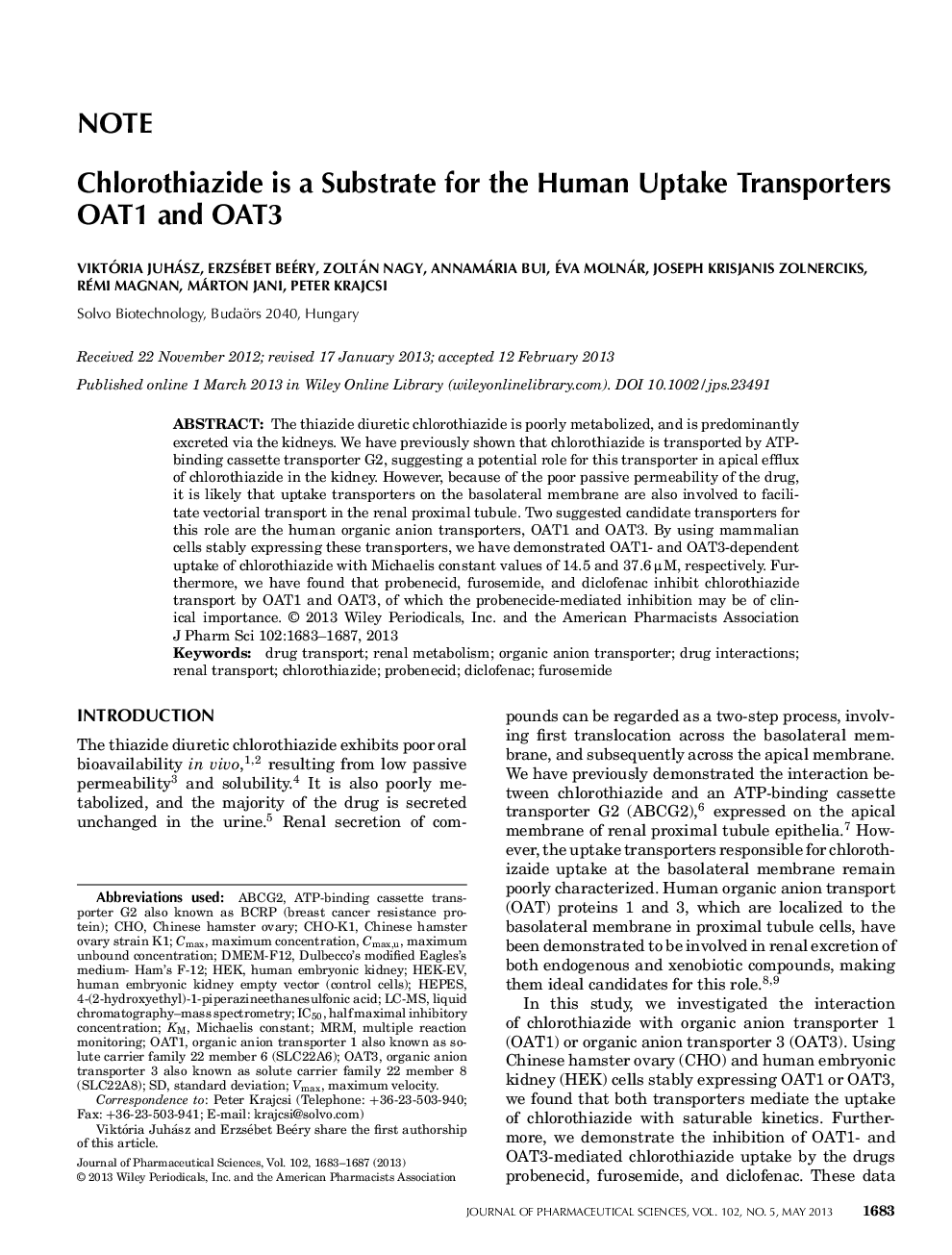| Article ID | Journal | Published Year | Pages | File Type |
|---|---|---|---|---|
| 2485382 | Journal of Pharmaceutical Sciences | 2013 | 5 Pages |
Abstract
The thiazide diuretic chlorothiazide is poorly metabolized, and is predominantly excreted via the kidneys. We have previously shown that chlorothiazide is transported by ATP-binding cassette transporter G2, suggesting a potential role for this transporter in apical efflux of chlorothiazide in the kidney. However, because of the poor passive permeability of the drug, it is likely that uptake transporters on the basolateral membrane are also involved to facilitate vectorial transport in the renal proximal tubule. Two suggested candidate transporters for this role are the human organic anion transporters, OAT1 and OAT3. By using mammalian cells stably expressing these transporters, we have demonstrated OAT1- and OAT3-dependent uptake of chlorothiazide with Michaelis constant values of 14.5 and 37.6 µM, respectively. Furthermore, we have found that probenecid, furosemide, and diclofenac inhibit chlorothiazide transport by OAT1 and OAT3, of which the probenecide-mediated inhibition may be of clinical importance. © 2013 Wiley Periodicals, Inc. and the American Pharmacists Association J Pharm Sci 102:1683-1687, 2013
Keywords
Related Topics
Health Sciences
Pharmacology, Toxicology and Pharmaceutical Science
Drug Discovery
Authors
Viktória Juhász, Erzsébet Beéry, Zoltán Nagy, Annamária Bui, Ãva Molnár, Joseph Krisjanis Zolnerciks, Rémi Magnan, Márton Jani, Peter Krajcsi,
